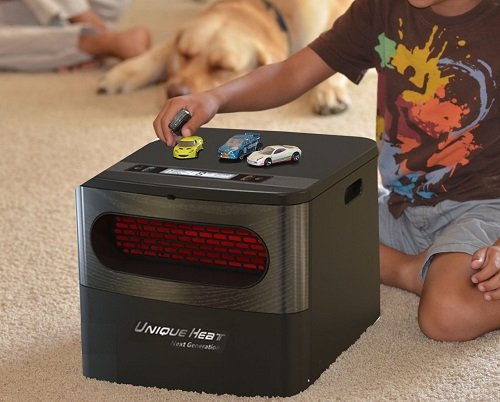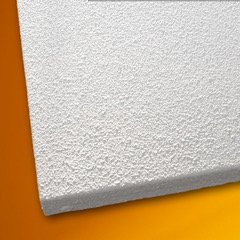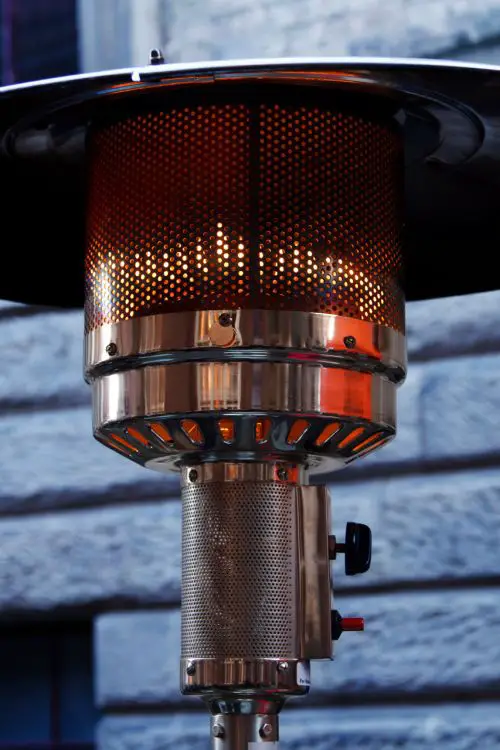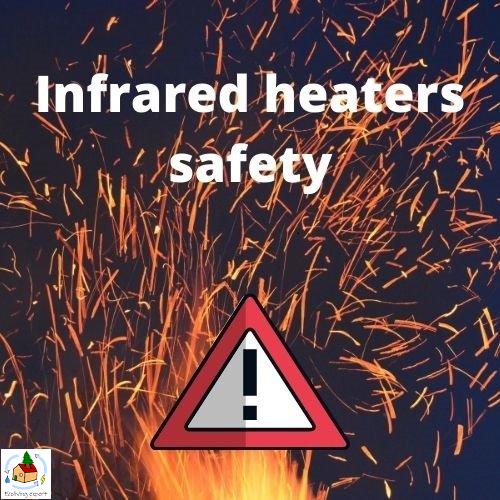Infrared heaters are safe for indoor and outdoor use when installed and used correctly. They include protective elements against fire hazards such as a protective casing and tip-over protection. Their infrared radiation is safe and healthy.
All infrared space heaters are perfectly safe to use. However, as with all heaters, they need to be used, placed, and installed properly.
In this article I will discuss:
- is infrared radiation safe?
- can infrared heaters cause fire?
- safe practices
- health benefits of infrared heating
- why outdoor infrared heaters are less safe
- the different types of infrared radiation explained
Is infrared radiation safe and healthy?
Infrared radiation is not harmful to our health. It can actually be quite healthy and is used in some forms of therapy and in infrared saunas.
Not all radiation is harmful. In fact, you are constantly exposed to some form of radiation, mostly from the sun. The most well-known type of radiation is visible light. The sun emits all kinds of radiation, including visible light, UV-light, and infrared.
Although infrared heaters get advertised as being ‘just like the sun’, they do not emit harmful radiation such as UV-light. The sun emits many forms of radiation, but Infrared heaters only emit infrared.
In fact, all objects that are hot emit a bit of infrared radiation. You might know this from seeing infrared-camera pictures. In these pictures, the infrared coming from people and warm objects is captured. In this way, people stand out since they are relatively warm and emit infrared radiation which is captured by the camera.
Infrared heaters are no danger to our health. However, there are forms of infrared radiation that require caution. They are not relevant for infrared heaters, but I discuss them at the end of this article if you are interested.
Can infrared heaters cause fire?
When installed and used correctly, infrared heaters cannot cause fire. Most portable infrared heaters come with a protective casing, over-heating protection, and tip-over protection. Infrared panels do not get hot enough to cause a fire.
Infrared heaters do not heat the air, but directly heat you and the objects in the room. Unfortunately, that does not mean they do not have elements that get hot. In fact, most infrared heaters have a quartz or carbon element that gets extremely hot.
However, quartz and other portable infrared heaters come with a protective casing that does not get too hot. They can, in fact, safely be touched. On top of that, some infrared heaters come with built-in tip-over protection.
Another feature that most infrared heaters have is overheating protection. If for some reason the interior of the heater gets too hot, the heater will shut off.

How to install and use an infrared heater safely
There are several good practices that ensure maximum safety and prevent any potential fire hazard.
- Nothing should be blocking the heat output, or threaten to do so
- Place the heater with sufficient space around it (at least 3 feet)
- Make sure the power cord does not pose a tripping hazard
- Do not use the heater in areas where gasoline, paint, or flammable liquids are used or stored
- Keep combustible materials such as furniture, pillows, bedding, papers, clothes, and curtains at least 3 feet (0.9 meters) from the front and rear of the heater, and keep them away from the sides
Do infrared heating panels get hot?
Infrared heating panels do not get hotter than 212 degrees Fahrenheit (100 degrees Celsius). They can be touched for about 2 seconds and cannot cause a fire. Additionally, they warm up in less than 5 minutes and cool down within 5 minutes when turned off.


These panels are just 1 inch (2 cm) thick and can be mounted to the ceiling or wall to emit their wonderful heat.
Infrared heaters are safer than other heaters
Infrared heaters are one of the safest heating options available. As I mentioned above, most infrared heaters come with a protective casing, overheating protection, and tip-over protection.
On top of that, they stand out because they reduce indoor air quality problems.
Infrared heaters are great for indoor air quality
Infrared heaters are a great option if you are concerned with your indoor air quality or have asthma or other air quality related issues. I wrote several articles on the topic of indoor air quality. If you are interested I suggest starting here: The complete indoor air quality guide for your home.
Most heaters burn some kind of fuel such as gas, oil, or wood. In the process of combustion, several indoor air pollutants are formed. These compounds enter your indoor air and pose a health hazard. Common symptoms of poor indoor air quality include headaches, dry eyes, and a general feeling of discomfort.
Infrared heaters (with the exception of gas-fired ones) do not burn any fuel but run on electricity instead. Therefore, they do not emit any harmful compounds.
Next to that, infrared heaters do not increase air circulation. Regular space heaters warm the air, making it move and circulate dust and other air pollutants around the room. This increases your exposure to them. Since infrared heaters heat directly and do not warm the air, they do not increase air circulation.
This means that switching to infrared heating reduces the production as well as circulation of indoor air pollutants. This will result in better indoor air quality.
Outdoor space heaters are less safe
Outdoor infrared heaters need to emit more intense heat to make you feel warm while sitting outdoors. This makes them a little less safe.
Outdoor infrared heaters are a little more dangerous because:
- they get much hotter than indoor heaters
- they do not have much protective casing


Outdoor heaters such as the terrace/patio heater in the picture above often run on natural gas.
Why do outdoor infrared heaters emit more intense heat?
You and any object that is heated emit a portion of their heat out again. This heat loss happens through emitting infrared and by heating the surrounding air.
Indoors, this heat stays inside relatively long. Outdoors, however, a part of this heat is lost to the outdoor air. Another portion will be lost because there are no walls or ceiling to reflect the infrared.
The difference between near-, medium- and far-infrared
Far-infrared is produced by most commercial infrared heaters and is perfectly safe. Medium-infrared causes a soft red-glowing light. You should avoid staring into it. Near-infrared requires eye and skin protection but is only used in industrial applications.
Infrared radiation comes in different so-called wavelengths. This works similarly to the different colors of visible light, which is also caused by different wavelengths.
These wavelengths can be distributed in three categories:
- near-infrared (short-wave radiation)
- mid-infrared (medium-wave radiation)
- far-infrared (long-wave radiation)
Short-wave infrared radiation is the most intense of the three options. This wavelength poses some health risks as long-term and/or close exposure to this type of infrared can lead to skin burns and damage to the eyes (similar to looking into a bright light). That is why glass-blowers and welders wear protective equipment.
Quartz and carbon infrared heaters produce mostly far-infrared. However, they also emit a bit of soft red-glowing light. This is an indication that they produce some short-wave infrared radiation. Although they are safe to use, I recommend not to stare into the light for too long.
Infrared heating panels are 100% safe as they only emit far-infrared.



1 thought on “Infrared heaters safety (fire, radiation, safe practices)”
Comments are closed.